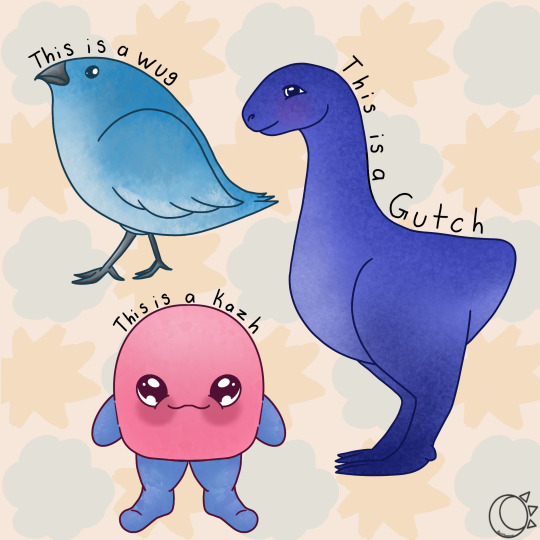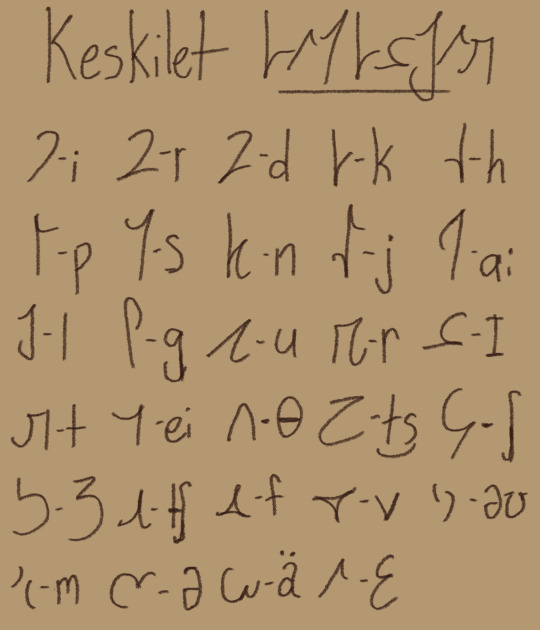#language development
Explore tagged Tumblr posts
Text
Pixie have question for all people what use any kind of AAC since childhood .
want to know if used AAC to “babble “ , Like babies do . if it help to play with AAC device, if help with learning to communicate . or , If use for stimming .
and if persons think any of That help with learning to communicate with AAC device later .
Pixie say thank you to everybody what answer or reblog very appreciate !
#question#aac user#childhood#high tech aac#aac device#nonverbal#semiverbal#autism#language development#language delay#developmental disability#developmental delay
184 notes
·
View notes
Text
And if you’d like, please reblog your answer and state in tags if you have/had any conditions/neurodivergence that affected language development. And your first word if you know what it was. I’m curious about the language development of tumblr users.
#scream rambles#for me personally I was nearly 19 months old#I am autistic#and my first word was huge after a car dealership ad I liked watching#tumblr#tumblr polls#poll#poll time#random polls#language#language development#neurodivergent#neurodiverse#neurodivergencies
24 notes
·
View notes
Text

Stupid sketches of linguistics favorite little freaks.
12 notes
·
View notes
Text
Date idea: you read Chang et al, 2002 and explain to me whatever the fuck is going on in there
#this has to be one of the worst I've ever read#idk why my brain just doesn't compute it#funnily enough it's also one of the most relevant#glitter gossip#not dc#something much worse#psychology#psycholinguistics#language development
10 notes
·
View notes
Text
“I don’t have time” is the most honest thing anyone has ever said about learning Hebrew.
Between work, family, life… where exactly are you supposed to fit in an entire new language?
Here’s what I’ve learned after teaching Hebrew for years:
The people who actually succeed aren’t the ones with endless free time.
The people who actually succeed are the ones who choose a program that fits into their lives and schedules.
Because Hebrew is a long game.
Five minutes while your coffee brews. Ten minutes on your lunch break. Fifteen minutes before bed instead of scrolling.
When you use the right program and method for you, that’s all you need to make great progress.
And the long game is won by showing up consistently using the right method.
Sarah messaged me last week:
“I’ve been doing 10 minutes a day of Practically Speaking Hebrew, and suddenly I understood an entire conversation at the grocery store.”
That’s the thing about Hebrew:
Every small moment adds up until one day you realize you’re actually having the conversations you always wanted to have.
Your busy life isn’t the problem.
It’s actually the perfect training ground for building the kind of steady Hebrew habit that actually sticks.
The question isn’t whether you have time.
It’s whether you’re ready to use the time you already have differently:
Using a program where every minute spent learning moves you forward…
And that fits into your life and schedule.
2 notes
·
View notes
Text
What Does Fluency Actually Mean? My Personal Take
In December 2024, I sat myself down and spent some time figuring out what I wanted from 2025. I picked five key parts of my life and wrote down some aspirations for each of them. Then I grouped them into short, medium, and long-term goals. When it came to my language learning goals, I initially decided that I’d try to learn three new languages by the time I turned 30. It felt ambitious but still…
#Goals#Tips#mandarin chinese#langauge learning#polyglot#travel#frenchblr#linguistics#langauge#language learning#language study#language development#studyblr#study motivation#girl blogger#blog
2 notes
·
View notes
Text

Here’s one of the alphabets I created for my sci-fi/fantasy world of Atelis.
This is the Core Language used by the four Core planets of the Raylosian Warrior Order (RWO). I based it off of several little symbols I’ve used for years. The first one was the “e” based off the family crest idea I had for my main character, Aisne Etorna. Because I hate the design (lol), I’ve scrapped it, but decided to flip it on its side to keep the idea there. The vibe is based of the A symbol I have for “Atelis.”

As this is the main language for the RWO, I wrote out the motto and the creed for the organization:

"The Raylosian Warrior Order" "Motto: On the authority of the great creator Raylos, the Raylosian Warrior Order protects and contains Crux Asteria’s magic in the pursuit of peace, knowledge, and freedom."

"Magic at our Core, Courage in our Hearts"
I had a lot of fun with this and ended up creating a second alphabet for the Cloranus Empire. I definitely might make more, but I at least wanted an alphabet! Worldbuilding is so much fun :)
(also if I made a couple mistakes, no I didn't lol)
#worldbuilding#sci fi and fantasy#language development#language stuff#fantasy language#writing process
2 notes
·
View notes
Text
I did an overhaul for my conlang and made a new alphabet

I’ll likely make a better chart later
#conlang#worldbuilding stuff#worldbuilding#fantasy#fantasy worldbuilding#constructed language#language development#eurath#keskilet
29 notes
·
View notes
Text
Hey, so right about the time I've been posting about sign languages, and ...
... a day after I answered that poll about whether babies are cute, this video popped up in my YouTube subscription feed:
youtube
Eye contact. Proper Closed Captions in English. ~10 minutes.
Summary: Professional linguist and parent of a toddler, explains what Baby Sign is, how it differs from ASL (and other natural sign languages), and discusses his family's experience with using Baby Sign with his own daughter.
9 notes
·
View notes
Text


xxx




#princess of wales#catherine princess of wales#catherine middleton#kate middleton#british royal family#the puppet company#hand puppet#puppet#royal rabbit#my first rabbit puppet#children#interaction#language development#educational games#early childhood education#early childhood development#HMP Styal's Mother and Baby Unit#HMP Styal
5 notes
·
View notes
Text

We are absolutely thrilled and delighted when our son, who has a speech/language delay, speaks a sentence. While this may seem commonplace to others, it brings us joy.
#speech delay#speech development#language development#family#my baby#people don't understand#mental health#little happiness
2 notes
·
View notes
Text

Early Childhood - Animals of the Continents
This student is very focused, looking for the label he needs! The Animals of the Continents material is designed to help students learn about different animals and their native habitats by matching wooden animal figures and labels to their respective continents. This work enhances language development, as children match animals to their labels and continents, they expand their vocabulary and language skills. This material also raises cultural awareness by introducing students the diversity of life on Earth, fostering an appreciation for different cultures and environments. It helps them understand that animals live in various parts of the world, each with unique characteristics. By placing animals on the correct continents, students develop a foundational understanding of world geography. They learn to recognize the shapes and locations of continents, which is a stepping-stone to more advanced geographical studies.
#continent study#habitats#language development#cultural awareness#geography#hands on learning#order#concentration#coordination#independence#tma#montessori#private school#arlingtontx#arlington#texas#infant#nido#toddler#early childhood#preschool#kindergarten#elementary#education#private education#nontraditional#the montessori academy of arlington
2 notes
·
View notes
Text

wug life | 2024
-mun ☆
2 notes
·
View notes
Text
Intertwined Cultural History and Language Development in East Asia
The cultures and languages of China, Korea, and Japan are closely intertwined through a long, complex history of mutual exchange and influence. China, as one of the earliest advanced civilizations in the region, exerted an immense influence on the development of Korean and Japanese cultures due to its geographic proximity, sophisticated statehood, and technological innovations.
Both Korea and Japan adopted the Chinese writing system - Korea used Chinese characters until the 15th century, while Japan still uses a mix of Chinese characters and indigenous scripts. The Chinese philosophy of Confucianism was adopted as a governing principle for state and society in both countries. Architectural styles, clothing, hairstyles, music, and aesthetics in Korea and Japan were heavily influenced by China during the Tang Dynasty. Technologies ranging from agriculture to civil engineering were transmitted from China.
Korea played a crucial role in mediating the cultural exchange between China and Japan, incorporating major Chinese elements into its own culture before passing them on to Japan. Buddhism, for instance, was introduced to Japan via Korea.
Although the flow of cultural influence was primarily from China, there was also a reciprocal exchange, with China absorbing innovations from its eastern neighbors over time. The shared use of Chinese characters also allowed for some degree of mutual intelligibility between the languages.
Despite these close connections, the Chinese, Korean, and Japanese languages developed into separate, mutually unintelligible idioms due to their distinct origins. While their vocabularies contain many Chinese loanwords, their grammars and pronunciation systems are markedly different, as following comparison of Korean and Japanese sentence structures with Chinese shows.
Similarities with Chinese:
- All three languages follow a Subject-Object-Verb (SOV) word order at the basic level.
- They use particles/markers to indicate grammatical roles like subject and object.
- Adverbs generally precede the verb they modify.
Differences from Chinese:
- Korean and Japanese have more complex systems of particles/markers compared to Chinese.
- Korean allows frequent omission of subjects when implied by context, which is less common in Chinese.
- In Korean, adjectives are conjugated like verbs following the SOV order. In Chinese, adjectives precede the nouns they modify.
- Japanese adjectives also precede nouns, similar to Chinese, but verbs still come last following SOV.
Unique Aspects:
- Korean has an extensive system of speech level markers built into the grammar to indicate formality/honorifics.
- Japanese uses different particles (wa/ga) to indicate the topic/subject in a nuanced way.
- Chinese relies more on word order than case markers to convey grammatical roles.
So while the three languages share the core SOV typology, Korean stands out with its flexible subject omission and verb-like adjective conjugations. Japanese sits somewhere between Korean and Chinese in its sentence structure. The similarities arise from millennia of Chinese linguistic influence in the region.
Neneh Cherry - Twisted
youtube
Tuesday, May 14, 2024
2 notes
·
View notes
Text
It's back-to-school time. Are you ready to transform your classroom with the power of American Sign Language? Then this webinar is for you!
Join us every Wednesday at 7 pm EST for our FREE Supporting Sign in the Classroom webinar series. Each week we will be discussing new topics.
Save your spot today!
#signlanguage#asl#spedteacher#elementaryteacher#homeschool#signlanguagebeginners#aslteachingresources#aslintheclassroom#back to school#language development#esl#preschoolteacher#kindergarten teacher#early childhood education#whole child learning#webinar#classroom management#classroom community#freewebinar
7 notes
·
View notes
Text

You know that feeling when you want to speak Hebrew but you're worried you'll sound... well, like a tourist asking for directions? 😅
The thing is, you don't need to sound Israeli.
You just need to be clearly understood to the local ear.
That tricky 'kh' sound that makes you feel like you're clearing your throat?
The Hebrew 'r' that seems impossible?
Those little pronunciation details that make locals do that polite head tilt when they're trying to figure out what you just said?
Steve figured it out in lesson 2.
Not because he suddenly developed perfect Hebrew pronunciation, but because he learned the simple tweaks that make ALL the difference between sounding confused and sounding confident.
And clear.
This is exactly why Practically Speaking Hebrew starts with pronunciation.
Because once you nail these basics, you're ready to nail the rest 💪
From "please don't make me say that word" to actually enjoying Hebrew conversations!
Steve's breakthrough could be your breakthrough too.
Link in bio 👆 and here too - learn.hebrewbyinbal.com
#student goals#hebrew#hebrew langblr#language#jewish#israel#jumblr#language learning#learn hebrew#language development
4 notes
·
View notes